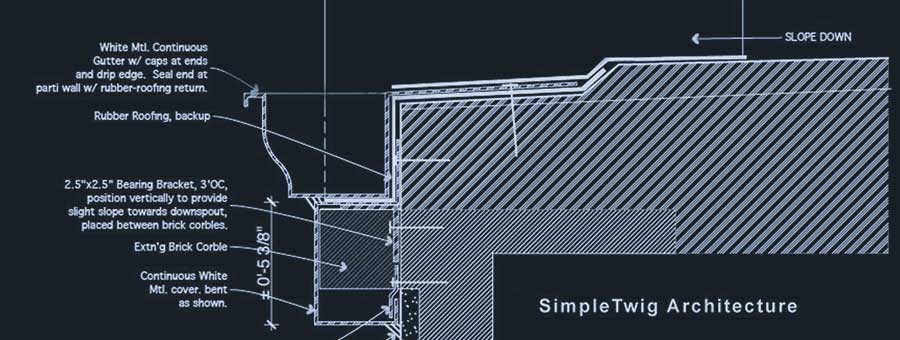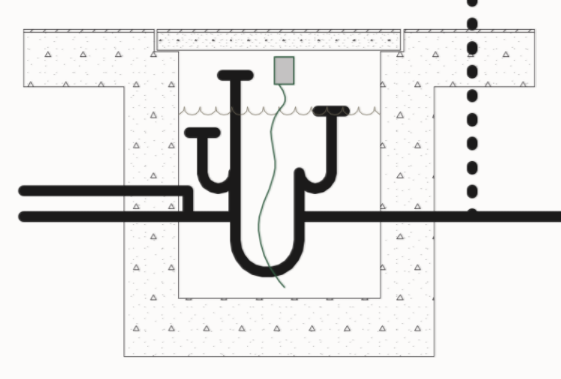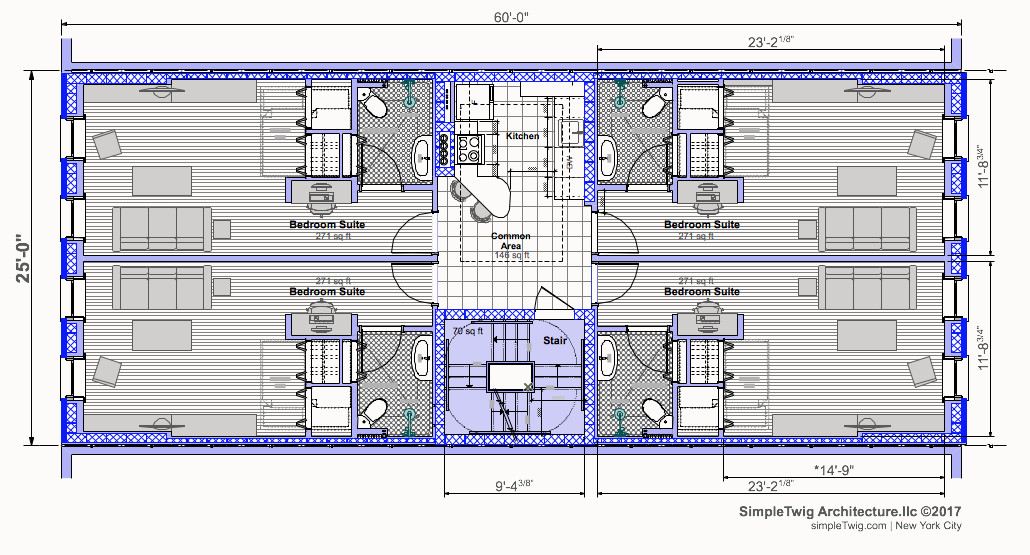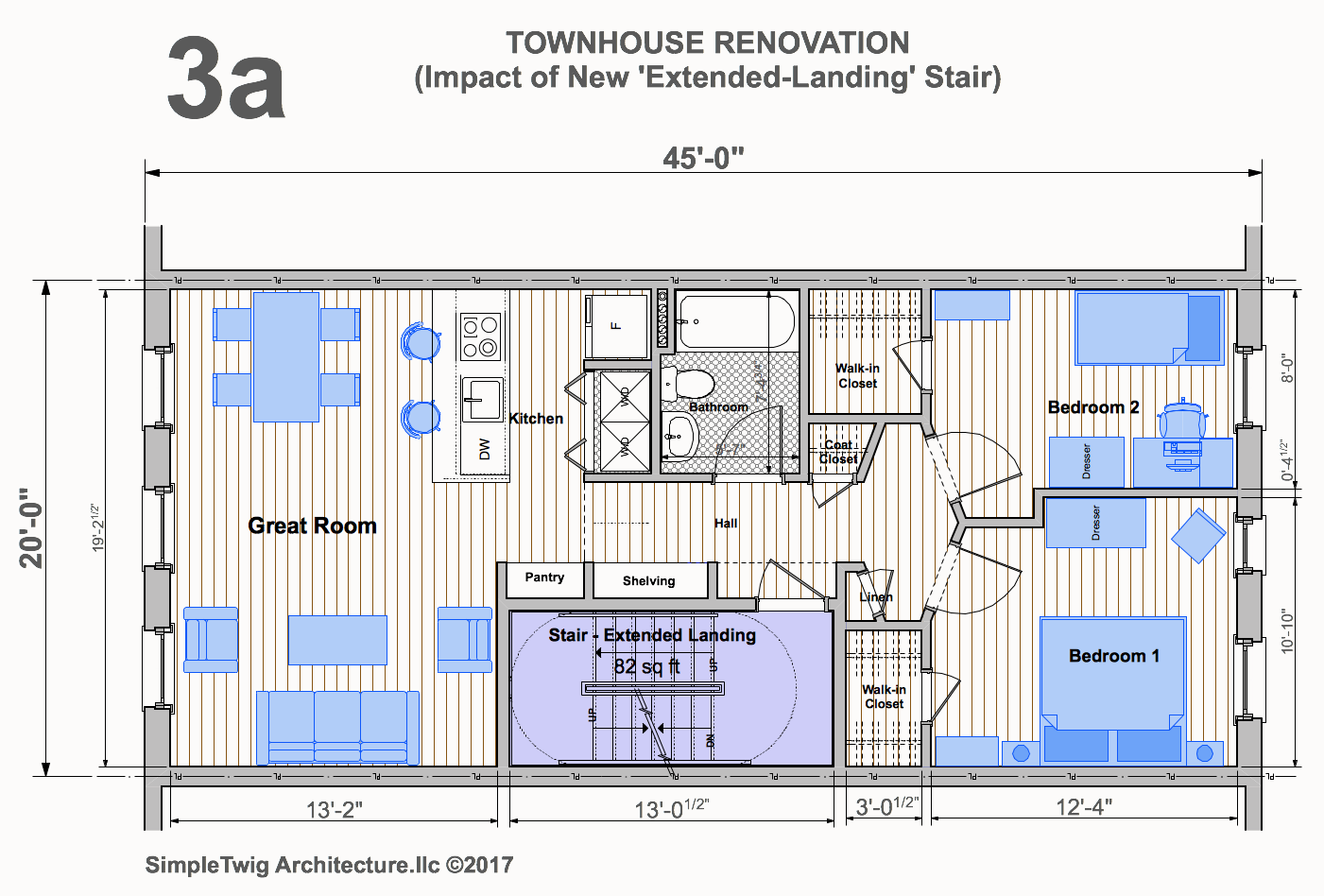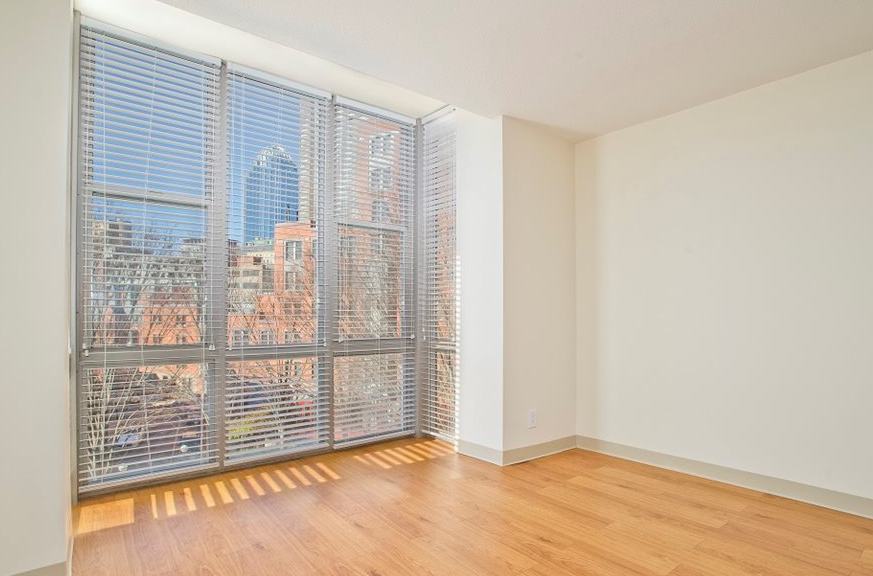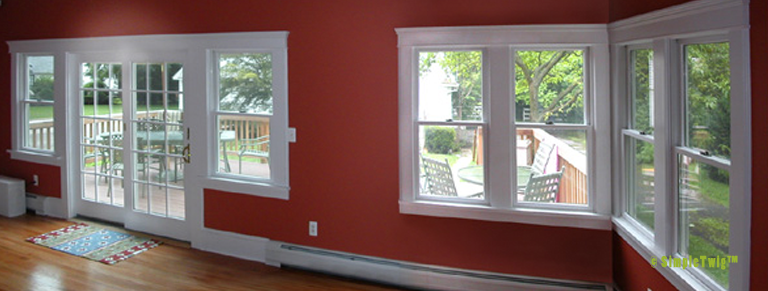In order to ensure a dry townhouse for years and decades, one has to properly detail roof connections so that there are at least 2 different systems in place directing running water away from the home. Here we examine the often overlooked townhouse gutter system which is typically slapped on the back of the house and glued in place.
Natural Flow Flood Prevention Drain System
We are proud to have developed a simple pipe system that prevents basement and cellar flooding due to a blockage in the house trap. It’s a rather simple system that for a couple hundred dollars can spare a homeowner from thousands of dollars in damages, including sparing them from the week or so to make their flooded area ‘sewer free’ which is not an easy task and often leaves residue behind despite the best efforts. YUCK!
Continue reading “Natural Flow Flood Prevention Drain System”
Efficiency of Home Design, the Laundry Machine
It’s looming, consuming, it’s laundry day.
Homes are functional machines (not if you choose the wrong Architect), although most people don’t consider this factor when designing a new home, or only as a side note. Yet when choosing an Architect you hope, or assume, they know what they’re doing. The truth is there might be passing consideration at best, for some of your home’s most important functional aspects, like your closets, laundry and that whole messy process.
Continue reading “Efficiency of Home Design, the Laundry Machine”
Owner Occupied Duplex – On the Top or Bottom?
There are many advantages for a townhouse owner to occupy a lower duplex, or perhaps it is the top floor duplex they should seek, and while a very strong case can be made to put the owner of a townhouse on the lower floors, there are solid arguments for occupying the top two floors. I, architect Nick Buccalo, will examine both possibilities and invite your comments on the issue.
Continue reading “Owner Occupied Duplex – On the Top or Bottom?”
The Ultimate Shared Living Suites – FOR DEVELOPERS
This version is for the smaller walkup building of 25’x60′ in order to fit the programmatic components comfortably. It provides a way for a developer to accommodate more people within a building footprint and thus increase the yearly income.
The concept is simple, take what would normally be a three bedroom apartment and change it to 4 shared living suites where individuals get their own private suite, complete with a private bathroom, bedroom and living space, and then share only the kitchen and other building amenities. For a 5 story walkup, the potential is for 19 ‘bedroom suites’ versus the conventional 5-3 bedroom apartments. It is simple math from this point to understand that the suites are occupied with working adults while 2/3’s of the bedrooms from a standard apartment are occupied by children, or, that home office.
Continue reading “The Ultimate Shared Living Suites – FOR DEVELOPERS”
Analysis of Residential Stair Configurations for Townhouses
This is a very cut and dry analysis of four different stair configurations that could help generate an additional $54,000 in rental income from a 4 story townhouse type structure just by reconfiguring the stair, touched on in a previous article (which we would recommend reading). The first option is the traditional townhouse stair, found in most townhouses in New York City. Often this stair offers stunning architectural detail and should be preserved, but more often than not the original stair has been replaced with a metal stair, due to sagging or some other issue. Sadly the replacements lack character and often do not fix the underlying issue to why they were sagging and are themselves sagging, causing stress fractures in party-walls at each end of the stair.
The advantages of replacing the stair are simple, it frees up square footage that can be used inside an apartment. The following compares three different stairs, the traditional, the compact and the ‘extended landing’, and a new comer, the squarish stair which is the best option (< spoiler alert). It is noted as ‘Stair 8’ which reflects the number of versions we’ve studied to get to that point. This ‘best option 8’ is shown in the article ‘The Ultimate Townhouse Floor Plan’ released August 28, 2017, so take a look at that one as well.
Continue reading “Analysis of Residential Stair Configurations for Townhouses”
Best Layouts for Townhouses – DIFFERENT SIZES
The following studies are not for new construction, but rather for the traditional townhouses of varying lengths, from 35′ to 50′, representing the vast majority of townhouses in New York City. The study examines the most efficient layouts for these variety of sizes and why they are efficient.
Efficient Layouts? In architectural design, the efficiency phase of the design process is an effort to minimize circulation space or other ‘wasted space’ (like public spaces) so there is more square footage available for usable rooms, and, with the newly found square footage to allot that space according to hierarchy, that is the Great Room (Living, Kitchen and Dining, in that order) being the place where people spend most of their daytime hours and thus represents the highest priority and top of the hierarchical pyramid, followed by bedrooms, bathrooms and the other rooms. To be efficient in architectural design means to leverage the available square footage to the best benefit of the end user.
Continue reading “Best Layouts for Townhouses – DIFFERENT SIZES”
Embracing the Family Clan, for their Healthy Financial Future
With baby boomers reaching maturity, new responsibilities can become overwhelming in a struggling economy. With parents in retirement, children growing up but staying at home or leaving, the financial burden for each can strain the whole family’s finances to a breaking point. Certainly if one finds themselves living paycheck to paycheck it is easy to make an argument for change.
Continue reading “Embracing the Family Clan, for their Healthy Financial Future”
Galvanic Action Corrosion Prevention
A SimpleTwig Article: Galvanic Corrosion, sometimes referred to as Galvanic Action, describes the corrosion to a metal when that metal is in contact, either directly or with the help of a catalyst or another element, with another metal whose characteristics are not complimentary. Often two different metals can come in contact with one another without any corrosion, but some combinations do lead to corrosion and ultimately failure. This can be critical to prevent ‘rusting’ and unsightly stains, to prevent water penetration when a flashing fails, or to even prevent parts of a building from falling apart when a fasteners like a screws fails.
We take a look at what it is and how to prevent this type of corrosion so our buildings will last many decades longer.
House Addition Project in New Jersey
You may know something isn’t quite right about your house or room, but don’t know exactly what to do to make it better. Running out of space, things look cluttered, just need a gathering space for family that is informal and inviting? This is where SimpleTwig Architecture steps in.

